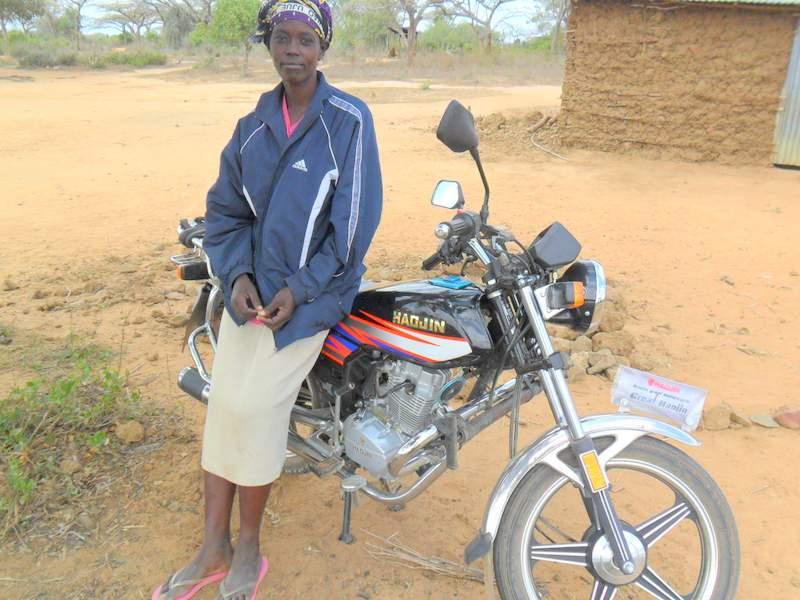Rapid urbanization is common to many developing and emerging market economies. In China, the scale and pace of urbanization is unprecedented – China’s urban population is estimated to reach 1 billion by 2030. India and Southeast Asia have also experienced high rates of urbanization. In Africa, cities are growing at an annual rate of 4 to 6%.
What has this meant for transportation systems? The growth of urban populations has put a severe strain on already poor road infrastructure. There is also a heavy strain on public transport systems, which don’t have the coverage or the capacity to provide services to even most people.
The growth of motorcycle taxis
Motorcycle taxis have become a popular solution in many cities. Whether they’re called ojek, habal-habal, xe ôm, okada or boda-boda, these vehicles have grown in popularity as an alternative or supplement to public transport and minibuses. They’ve especially seen a surge in South and Southeast Asia and sub-Saharan Africa.

What has driven this surge? One obvious reason is that motorcycles are cheaper than cars. Given the recent availability of inexpensive Chinese models, there are low capital requirements. Motorcycles are available for around US$1,000 in sub-Saharan Africa.
Motorcycle taxis are also able to take passengers to their destinations much more quickly than a minibus or group taxi. They can cut through traffic and provide direct door-to-door service. In comparison, minibuses and group taxis make multiple stops and don’t necessarily take you all the way to your destination.
Moto-taxi services have also grown more important given the increasing complexity of travel patterns. Traditional routes typically provide access from periphery areas into center city areas. However, the growth of cities has created demand for orbital routes (around the periphery of cities), which motorcycle taxis are able to meet. Moto-taxi services are also moving into rural areas, where they are found to be very useful for navigating bad roads.
Economic advantages and disadvantages
There are two major economic advantages of motorcycle taxis. First, there is clear demand for these services. Moto-taxi services in these countries have developed organically due to the high demand for alternative transportation options. These services are clearly addressing inefficiencies in the current system.
Additionally, moto-taxis are addressing an issue that we’ve heard a lot about in the recent U.S. presidential debates (though obviously in a different context). That’s right -- the hot buzz word of the moment is jobs. In a past blog on technical education, I highlighted some of the global challenges of youth unemployment. Most moto-taxi operators are relatively young and educated, and running a moto-taxi is an appealing option given high unemployment and low entry requirements. These new services have created tens to hundreds of thousands of jobs in cities where they have taken off.
All that said, there are some disadvantages as well. Environmental impacts (air and noise) and safety are two major concerns that have been raised in studies on moto-taxis. In Lagos, some drivers ride on the wrong side of the road and ignore red lights to save time. Also in Africa, motorcycle fares are around 20% higher than minibus fares because of the direct door-to-door service. Several World Bank reports have recommended that governments should implement stronger regulations to address these issues.

Kiva borrower Alice and her moto-taxi.
Financing challenges
In many of these countries, the cost of buying a motorcycle can be prohibitively high. This has especially been the case in sub-Saharan Africa. While most people in South and East Asia own their own motorcycles, personal ownership is low in sub-Saharan Africa. Most moto-taxi services are owner operated (40% in Kampala, 65% in Lagos and 50% in Douala). Those who do purchase their own vehicles are largely self- or informally-financed.
If given credit options, motorcycle drivers would be able to own their own bikes rather than rent indefinitely. By using their rental payments for monthly loan repayments, drivers can own their own motorcycles in just one to two years.
Kiva provides loans to motorcycle drivers to purchase or repair their vehicles. You can fund one of these loans here. Once drivers own their motorcycles, their profits increase and they can use the additional income to pay for school fees, generate savings and start other side businesses. Ownership also creates stronger job security, as they don’t have to worry that owners will suddenly take away their bikes or raise rents.
Kiva is currently working with a prospective partner to launch loans for motorcycle taxi drives to purchase their own bikes. We'll keep you posted.
LEND TO A MOTORCYCLE TAXI DRIVER TODAY!
Rebekah Chang is an intern for Kiva’s Strategic Initiatives team, looking for new partners and loan products to extend opportunities and access to more people around the world. Rebekah has an M.A. in Development Economics and Conflict Management from Johns Hopkins University School of Advanced International Studies. Send her your feedback on this blog series at blog@kiva.org.
This is part of a larger series on Kiva’s strategic initiatives and innovative loan products, which are designed to expand opportunities for more borrowers across the globe.
Have questions about moto-taxis? Send them our way at blog@kiva.org.